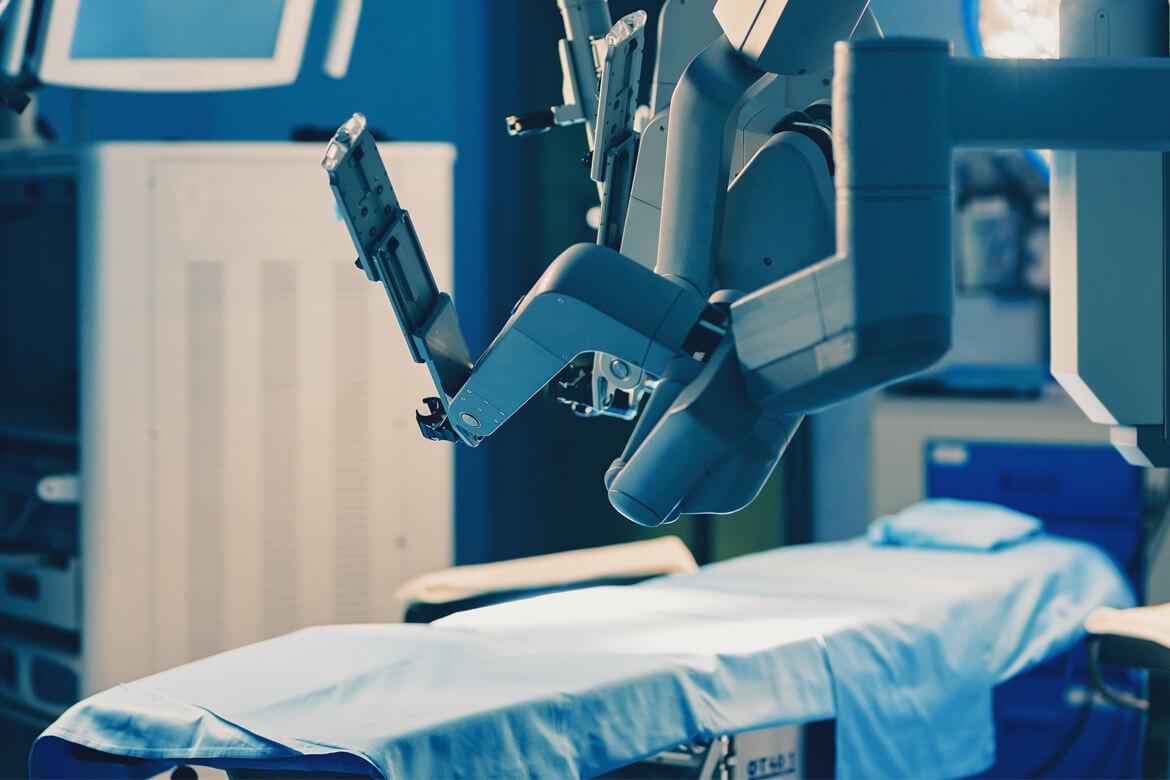-
-
Featured Care Areas

Robotic Radical Prostatectomy
What is a robotic radical prostatectomy?
Robotic radical prostatectomy is a robotic-assisted laparoscopic surgery that removes the entire prostate gland. Surrounding tissues such as the seminal vesicles and nearby lymph nodes may also be removed.
This procedure uses a robot-assisted surgical system which:
- Gives a magnified, three-dimensional view of the surgical field. This helps the surgeon visualise and avoid blood vessels to reduce unnecessary blood loss.
- Uses robot 'arms' and 'wrists' that can be precisely controlled by the surgeon for greater accuracy and dexterity.
- Reduces the time taken to position the patient and equipment to less than 15 minutes. The whole operating time takes just 2.5 hours.
- Improves outcomes by preserving nerves and tissues.
Why do you need a robotic radical prostatectomy?
Robotic radical prostatectomy or robotic prostate removal is used as a treatment for prostate cancer in men whose cancer is limited to the prostate.
Compared with conventional open surgery, robotic radical prostatectomy:
- Has a lower risk of rectal injury.
- Greatly lowers the need for blood transfusions.
- Shortens the duration of dependence on a catheter.
- Allows better conservation of the nerves needed to achieve and maintain an erection.
- Is a minimally invasive surgery with a low conversion to open surgery.
- Requires smaller and fewer cuts, which results in less blood loss and pain.
- Requires a shorter hospital stay of 2 – 3 days (compared with 5 – 7 days).
- Results in faster urinary continence (ability to control urination).
- Results in faster recovery of erectile function.
What are the risks and complications of robotic radical prostatectomy?
Robotic radical prostatectomy carries a very low risk of serious complications.
In rare cases, there may be nerve damage that can lead to:
Other general complications that may arise include:
- Blood clots
- Poor wound healing
- Infection or bleeding after the operation
- Groin hernia, also known as inguinal hernias
- Narrowing of the urethra
- Urinary leakage
Why choose Parkway East Hospital?
Parkway East Hospital provides comprehensive services for urological problems in Singapore. We offer effective diagnosis and management of a wide range of urological problems such as bladder diseases and conditions.
This includes expertise in robotic radical prostatectomy, supported by a specialised array of diagnostic and treatment facilities.
Estimated cost
Private healthcare can be affordable. Use our Hospital Bill Estimator to determine the estimated cost of this procedure. If you have hospital insurance, find out how you can use your insurance.
Find doctors from our allied hospitals
We offer a full spectrum of healthcare services under IHH Healthcare Singapore.
Check if your preferred hospital offers this treatment:
This page has been reviewed by our medical content reviewers.
Need help?
For enquiries, please call
+65 6377 3737
For appointment bookings, please WhatsApp
+65 8111 3777




